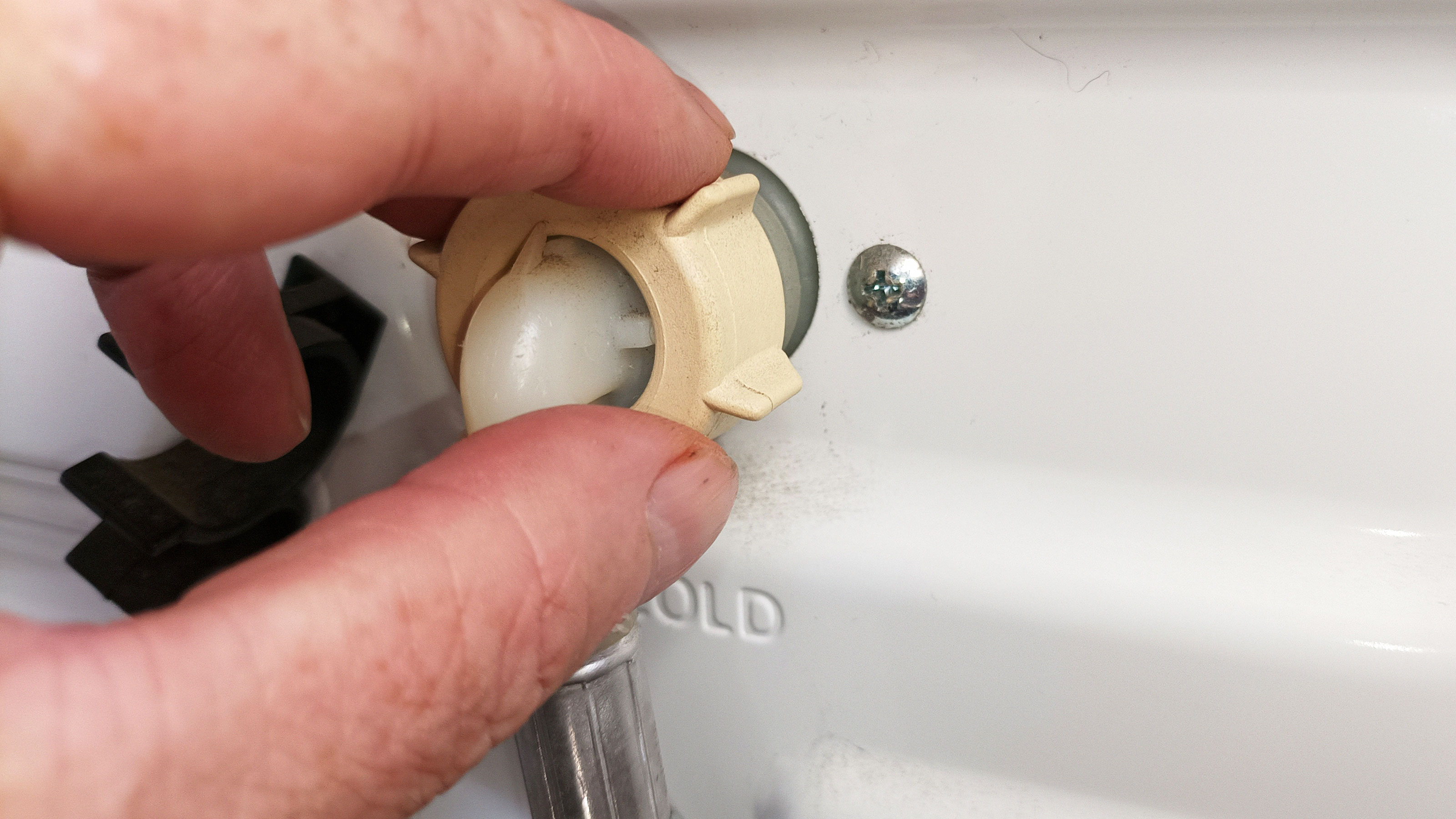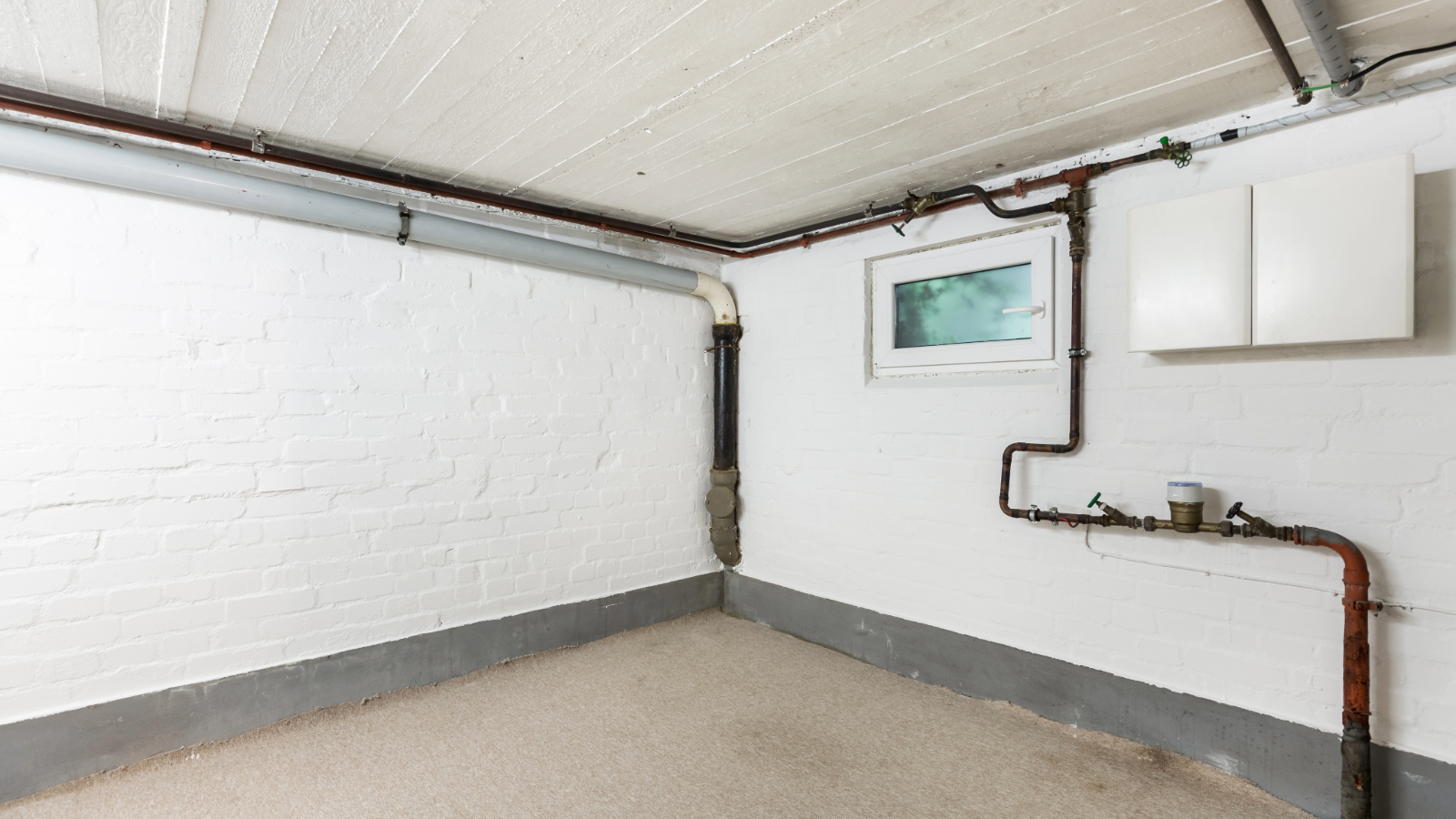How to disconnect a washing machine — the leak-free way
Do you know how to disconnect a washing machine? Get the lowdown on how to locate the power and water supply and remove the necessary pipes ready to move

Got a new washing machine? Then you need to know how to disconnect a washing machine before you can get rid of the old and welcome the new. It’s not a difficult DIY job but get it wrong and you could have water all over your floors and no one wants that.
Washing machines have one or two pipes that connect the water supply. More modern washing machines, like one of the best integrated dishwashers, will have a single cold water connection. Once this is disconnected along with the power supply and drain pipe your washing machine is ready to move.
Here's our quick guide to undertaking this task on a DIY basis.
How to disconnect a washing machine: A quick step-by-step
Disconnecting a washing machine isn’t a difficult task but there are a few must-know steps to take to make sure that you get it right.
1. Check for water pipes
Check the cupboards next to your washing machine to see if the washing machine water pipe or pipes are connected to your sink plumbing. This may be the case for some washing machines, but most will have two separate pipes near the back of the machine. If your washing machine is connected to the sink plumbing, the water pipe will have a tap where you can switch off the water supply.
2. Move your washing machine
If you have access to the power outlet where your washing machine is plugged in, then switch it off. Now open the door of your washing machine and place both hands under the top of the door opening and move the machine towards you. Swing to the left or right 45 to 90 degrees so you have access to the back of the washing machine.
3. Switch off electric and water
If your power supply is behind the washing machine, switch it off before continuing. Now locate the water supply pipe. Older washing machines will have a red and blue pipe connected to cold and hot water pipes. Newer washing pipes typically have a single grey pipe connected to the cold water supply. Switch off at the connection.
4. Disconnect the washing machine
Before you disconnect a washing machine, get a couple of buckets to catch water at each end of the water pipes and some towels to put on the floor to catch any water spills. Now carefully unscrew the water pipes on the back of the washing machine and place them in a bucket. Hold the pipe up and wiggle to help remove water.
Now take the drain pipe or hose – this is typically placed in an outlet pipe next to the water pipe supply – and leave until empty. Your washing machine is now disconnected and ready to be moved.
Bring your dream home to life with expert advice, how to guides and design inspiration. Sign up for our newsletter and get two free tickets to a Homebuilding & Renovating Show near you.
If you are installing a new washing machine, think about getting an energy efficient model to help save money. Plus, try to use it at off peak electricity times if you're on economy 7 to keep down the running costs.

How do you move a disconnected washing machine?
Washing machines are not light and typically need two people to pick it up and move to another location. But if you need to move your washing machine and don’t have a companion you can use a sack truck.
First, make sure that the pathway to wherever you are going to put the washing machine is clear. Slip the sack truck under the back of the washing machine, put your foot on the back of the sack truck at the bottom and then your hand on the front and top of the washing and gently ease back. When ready, carefully move your washing machine.
If you have a small utility room with your washing machine stacked on top of another appliance you will need to call on the help of an assistant.
What can I do with my old washing machine?
There are a few options if you want to get rid of your washing machine. If it has stopped working there might be a cheap simple solution. Call a plumber and get a quote on how much it will cost to repair.
The other options are to to take it to the local recycling centre, or if it's still in working order sell it via Facebook Marketplace or similar, or donate to a charity.
Steve Jenkins is a freelance content creator with over two decades of experience working in digital and print and was previously the DIY content editor for Homebuilding & Renovating.
He is a keen DIYer with over 20 years of experience in transforming and renovating the many homes he has lived in. He specialises in painting and decorating, but has a wide range of skills gleaned from working in the building trade for around 10 years and spending time at night school learning how to plaster and plumb.
He has fitted kitchens, tiled bathrooms and kitchens, laid many floors, built partition walls, plastered walls, plumbed in bathrooms, worked on loft conversions and much more. And when he's not sure how to tackle a DIY project he has a wide network of friends – including plumbers, gas engineers, tilers, carpenters, painters and decorators, electricians and builders – in the trade to call upon.

